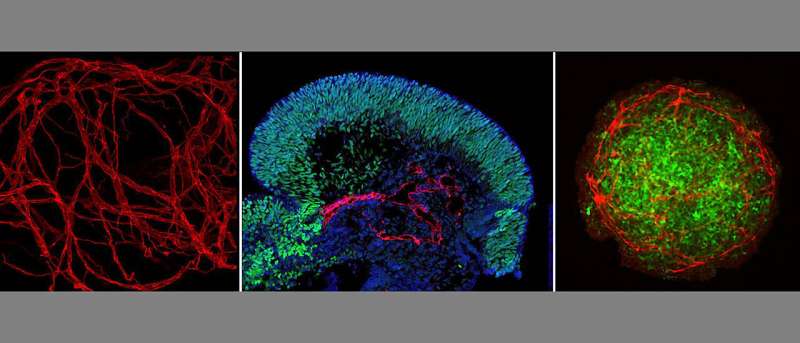Complex organ models grown in the lab

Scientists at the University of Würzburg have successfully produced human tissues from stem cells. They have a complexity similar to that of normal tissue and are far superior to previous structures.
In 2006, Japanese researchers came up with a new way of creating pluripotent stem cells through epigenetic reprogramming of connective tissue cells. Their discovery has yielded a highly valuable cell type which scientists can use to grow all cells of the human body in a Petri dish.
When culturing these so-called "induced pluripotent stem cells" (iPS cells) as three-dimensional cell aggregates, functional miniature versions of human organs, the so-called organoids, can be created by selectively adding growth factors. In the past years, this technique has been used to create cell culture models of the intestines, the lung, liver, kidneys and the brain, for example.
Previous organoids remained incomplete
Such organoid models are often surprisingly similar to real embryonic tissues. However, most remained incomplete because they lacked stromal cells and structures, the supportive framework of an organ composed of connective tissue. For instance, the tissues lacked blood vessels and immune cells. During embryonic development, all these cell types and structures are engaged in a process of constant exchange, they influence each other and thereby boost the development and maturation of the tissue and of the organ. Diseases, too, usually evolve in the tissue context with the involvement of different cell types. The selective incorporation of stromal components, and especially of functioning blood vessels, would therefore promote the maturation of already established organoid models.
Scientists from the University of Würzburg have now taken a major step towards developing such complex organoids. The anatomists, Dr. Philipp Wörsdörfer and Professor Süleyman Ergün, the head of the Institute of Anatomy and Cell Biology, were in charge of the project. In an article published in the journal Scientific Reports in early November 2019, the two researchers present the results of their work.
Mesodermal stem cells make miniature organs complete
"We used a trick to achieve our goal," explains Philipp Wörsdörfer. "First we created so-called mesodermal progenitor cells from pluripotent stem cells." Under the right conditions, such progenitor cells are capable of producing blood vessels, immune cells and connective tissue cells.
To demonstrate the potential of the mesodermal progenitor cells, the scientists then mixed these cells with tumor cells as well as with brain stem cells that had previously been generated from human iPS cells. This mixture grew to form complex three-dimensional tumor or brain organoids in the Petri dish featuring functional blood vessels, connective tissue, and in the case of the brain tissue, also brain-specific immune cells, the so-called microglia cells.
"In the future, the miniature organ models generated with this new technique can help scientists shed light on the processes involved in the genesis of diseases and analyze the effect of therapeutic substances in more detail before using them on animals and human patients," says Süleyman Ergün. This would allow the number of animal experiments to be reduced. Moreover, the organ models could contribute to gaining a better understanding of embryonic development processes and grow tissue that can be transplanted efficiently since they already have a functional vascular system.
More information: Philipp Wörsdörfer et al. Generation of complex human organoid models including vascular networks by incorporation of mesodermal progenitor cells, Scientific Reports (2019). DOI: 10.1038/s41598-019-52204-7



















